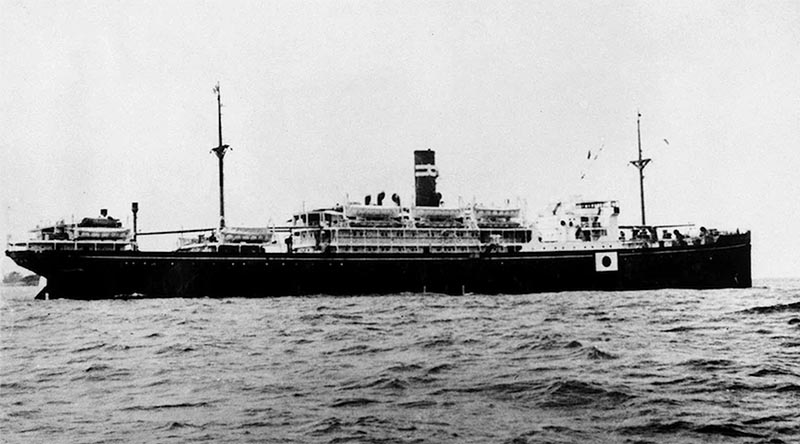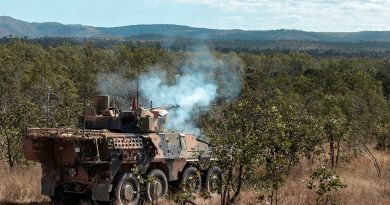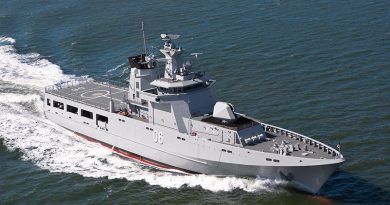Wreck of Montevideo Maru found

The shipwreck that represents Australia’s largest loss of life at sea has been discovered more than 80 years after it was sunk by United States Navy torpedos.
Japanese merchant vessel the SS Montevideo Maru was sunk on 1 July 1942 off the coast of the Philippines after setting sail from the former Australian territory of New Guinea.
The ship was carrying approximately 1060 prisoners from around 16 countries, including 850 Australian service members from Rabaul.
The ship was not marked as a prisoners-of-war transport when it was struck by four torpedos from the US Navy submarine USS Sturgeon.
The number and identity of those on board the Montevideo Maru was not fully revealed until after the war, but the location of the shipwreck had remained a mystery.
81 years after its final voyage, the resting place of the Montevideo Maru has now been discovered by a search team led by not-for-profit Silentworld Foundation, deep-sea survey specialists Fugro, and supported by Defence.
At more than 4000m depth, the wreck is deeper than the RMS Titanic.
It is hoped the discovery will bring relief to the families of the Australians on board.
Prime Minister Anthony Albanese said he hoped today’s news would bring a measure of comfort to loved ones who have kept a long vigil.
“The extraordinary effort behind this discovery speaks for the enduring truth of Australia’s solemn national promise to always remember and honour those who served our country,” PM Albanese said.
This is the heart and the spirit of Lest We Forget.”
Defence Minister Richard Marles said that for 81 years, hundreds of Australian families had waited for news of this shipwreck.
“It is my great privilege to confirm their loved ones have been found,” Mr Marles said.
“Finding the Montevideo Maru has been a remarkable effort by a passionate team of researchers and the Silentworld Foundation, supported by dedicated Defence personnel.
“I also acknowledge the generous support from Philippines authorities in permitting this search.
“These Australians were never forgotten.
“Lost deep beneath the seas, their final resting place is now known.
“This remarkable discovery is a reflection of who we are as a nation and remarkably close to our day of national commemoration – Anzac Day.
“We will remember them.”
Chief of the Australian Army Lieutenant General Simon Stuart said the Australian soldiers, sailors and aviators who had fought to defend Rabaul met a terrible fate at sea on the Montevideo Maru.
“Today we remember their service, and the loss of all those aboard, including the 20 Japanese guards and crew, the Norwegian sailors and the hundreds of civilians from many nations,” Lieutenant General Stuart said.
“I want to thank the Silentworld team and the dedicated researchers, including the Unrecovered War Casualties team at Army, who have never given up hope of finding the final resting place of the Montevideo Maru.
“A loss like this reaches down through the decades and reminds us all of the human cost of conflict.
“Lest We Forget.”
Director of Silentworld, John Mullen said the discovery of the Montevideo Maru closed a terrible chapter in Australian military and maritime history.
“Families waited years for news of their missing loved ones, before learning of the tragic outcome of the sinking,” Mr Mullen said.
“Some never fully came to accept that their loved ones were among the victims.
“Today, by finding the vessel, we hope to bring closure to the many families devastated by this terrible disaster.
“I would like to express my gratitude to all of the dedicated Silentworld team involved in this expedition, to the outstanding crew and technical team on board the Fugro Equator, and to the Australian Department of Defence for their unwavering support.
“I am proud to be the citizen of a country that never forgets or stops looking for those lost in the course of duty, no matter how many years may pass.”
It has taken nearly five years of planning by Silentworld and 20 years of dedication from the Montevideo Maru Society to assemble the expedition team, led by Australian businessman, maritime history philanthropist and explorer John Mullen.
The search finally commenced on 6 April in the South China Sea, 110km north-west of Luzon.
After just 12 days, on 18 April, a positive sighting was recorded using state-of-the-art technology, including an autonomous underwater vehicle with in-built sonar.
It took a number of days to verify the wreck using expert analysis from the project team, comprising maritime archaeologists, conservators, operations and research specialists, and ex-navy officers.
Andrea Williams, whose grandfather and great uncle died on the Montevideo Maru, and who is a founding member of the
Rabaul and Montevideo Maru Society, was on board when the wreck was discovered.
“Today is an extraordinarily momentous day for all Australians connected with this tragic disaster,” Ms Williams said.
“Having had a grandfather and great-uncle as civilian internees on Montevideo Maru always meant the story was important to me, as it is to so many generations of families whose men perished.
“Being part of the Silentworld team that has found the wreck has been both hugely emotional, and also fulfilling.”
The wreckage of the Montevideo Maru, sitting at a greater depth than the Titanic, will not be disturbed – no artefacts or human remains will be removed – out of respect for all the families of those onboard who were lost.
The site will be recorded for research purposes.
Details of any commemorative events will be provided at the appropriate time.
Descendants of the Montevideo Maru may register their details here to be kept informed.
.
.

.
.






Make the YANKS accountable ! They would if it happened to any of their TROOPS regardless !!!
If you had a clue you would know international law said YOU MUST HAVE P.O.W. ON YOUR SHIP IF IT WAS CARYING P.O.W’s. The Japanese failed to do this. Had they done so the ship would have been spared. Robert Bailey
Great find,close to ANZAC day, pity it wasnt mentioned that this was found by a Dutch company !